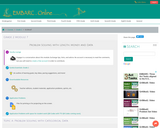
G2M7: Problem Solving with Length, Money, and Data. Contains 41 Lessons.
- Subject:
- Mathematics
- Material Type:
- Module
- Provider:
- EMBARC.Online
- Date Added:
- 08/13/2019

G2M7: Problem Solving with Length, Money, and Data. Contains 41 Lessons.
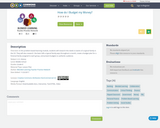
In this problem-based learning module, students will research the needs vs wants of a typical family in the US. They will also research the basic bills a typical family pays throughout a month, create a budget plan for a fictional family assigned to each group, and present budgets to authentic audience.
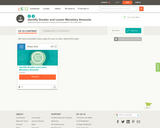
This short video and interactive assessment activity is designed to teach fourth graders about comparing bills with pictures.
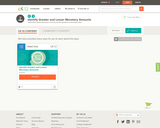
This short video and interactive assessment activity is designed to teach second graders about identifying greater and lesser amounts.
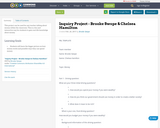
This project can be used for any teacher talking about money within the classroom. This is a fun and interactive way for students to gain real-life knowledge about money.
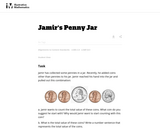
The purpose of this task is to help students articulate their addition strategies and would be most appropriately used once students have a solid understanding of coin values.

This word problem task involves ratios.
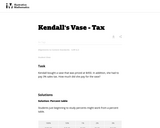
This word problem requires students to compute sales tax.
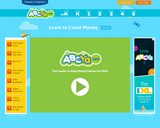
In this fun interactive, students practice counting money by clicking and dragging bills and coins into a box. As students answer correctly, they earn a fish for the fish bowl. The activity progressively becomes more challenging as students progress. There are two levels: Beginner and Expert.

Students will learn about the role of money in the colonial economy by participating in a trading activity in which they observe the effects of too little money on trade within a colony.

The purpose of this task is to generate a classroom discussion about ratios and unit rates in context.

Four full-year digital course, built from the ground up and fully-aligned to the Common Core State Standards, for 7th grade Mathematics. Created using research-based approaches to teaching and learning, the Open Access Common Core Course for Mathematics is designed with student-centered learning in mind, including activities for students to develop valuable 21st century skills and academic mindset.

Proportional Relationships
Type of Unit: Concept
Prior Knowledge
Students should be able to:
Understand what a rate and ratio are.
Make a ratio table.
Make a graph using values from a ratio table.
Lesson Flow
Students start the unit by predicting what will happen in certain situations. They intuitively discover they can predict the situations that are proportional and might have a hard time predicting the ones that are not. In Lessons 2–4, students use the same three situations to explore proportional relationships. Two of the relationships are proportional and one is not. They look at these situations in tables, equations, and graphs. After Lesson 4, students realize a proportional relationship is represented on a graph as a straight line that passes through the origin. In Lesson 5, they look at straight lines that do not represent a proportional relationship. Lesson 6 focuses on the idea of how a proportion that they solved in sixth grade relates to a proportional relationship. They follow that by looking at rates expressed as fractions, finding the unit rate (the constant of proportionality), and then using the constant of proportionality to solve a problem. In Lesson 8, students fine-tune their definition of proportional relationship by looking at situations and determining if they represent proportional relationships and justifying their reasoning. They then apply what they have learned to a situation about flags and stars and extend that thinking to comparing two prices—examining the equations and the graphs. The Putting It Together lesson has them solve two problems and then critique other student work.
Gallery 1 provides students with additional proportional relationship problems.
The second part of the unit works with percents. First, percents are tied to proportional relationships, and then students examine percent situations as formulas, graphs, and tables. They then move to a new context—salary increase—and see the similarities with sales taxes. Next, students explore percent decrease, and then they analyze inaccurate statements involving percents, explaining why the statements are incorrect. Students end this sequence of lessons with a formative assessment that focuses on percent increase and percent decrease and ties it to decimals.
Students have ample opportunities to check, deepen, and apply their understanding of proportional relationships, including percents, with the selection of problems in Gallery 2.

In Part l of this two-part lesson, students use an interactive to place percent increase and percent decrease signs between monetary amounts to indicate the correct increase or decrease between the amounts of money. They must also place the correct decimal multiplier between the two amounts to show what decimal to multiply the original amount by to get the final amount.Key ConceptsStudents apply understanding of percent change situations to systematize and generalize patterns in relating two amounts by multiplication.Goals and Learning ObjectivesIdentify the percent increase or percent decrease between two amounts.Identify the decimal multiplier that when multiplied by the original amount results in the final amount.Reason abstractly and quantitatively.
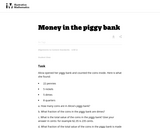
This task is designed to help students focus on the whole that a fraction refers to. It helps students to realize that two different fractions can describe the same situation depending on what you choose to be the whole.

The purpose of this task is for students to solve problems involving decimals in a context involving a concept that supports financial literacy, namely inflation.
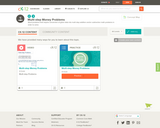
This short video and interactive assessment activity is designed to teach fourth graders about multi-step money problems.

Using the online interactive students will practice solving word problems involving money.

Using the online interactive students will practice solving word problems involving money.

Using the online interactive students will practice solving word problems involving money.